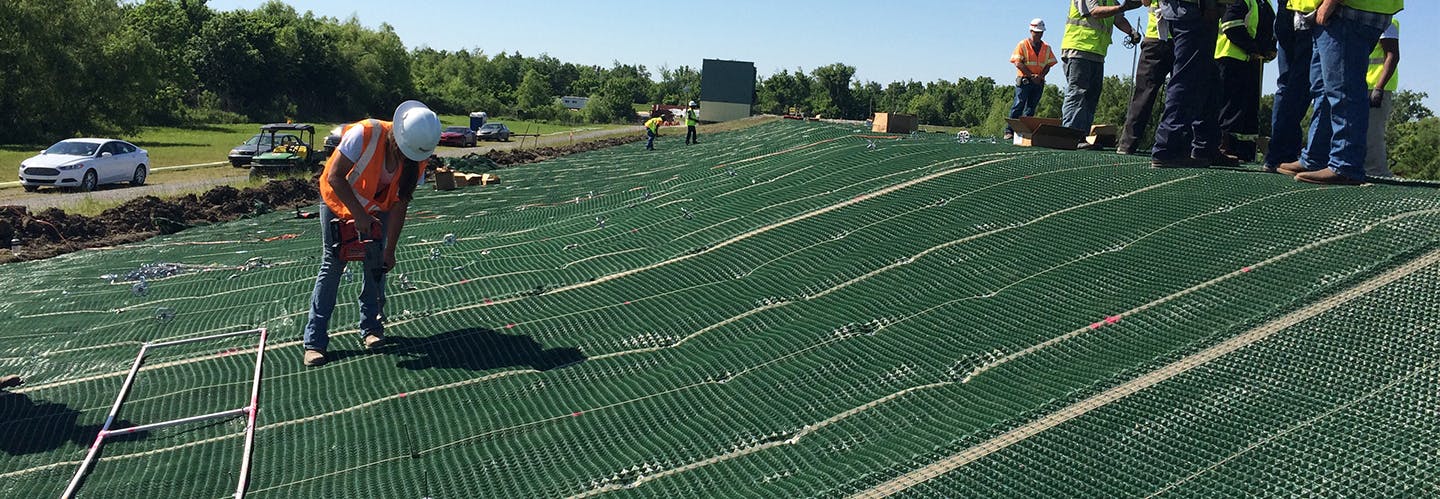Resilient Flood Mitigation Protects Louisiana Levee System
Posted on 9.9.2021 by Lee Pierce
Sixteen years to the day after Hurricane Katrina slammed into Louisiana, Hurricane Ida made landfall just 40 miles down the coast. In addition to their date and location, these storms shared similar characteristics, which has lead to multiple comparisons. Thankfully, lessons learned from Katrina and efforts to mitigate future devastation have been successful.
Following the catastrophic damage caused by Hurricane Katrina in 2005, The U.S. Army Corps of Engineers (USACE) embarked on one of the largest and most comprehensive public works projects in American history. The USACE established the Hurricane Storm Damage Risk Reduction System (HSDRRS) to provide the greater New Orleans Area a 100-year level of risk reduction, meaning that infrastructure would be established to defend against a storm surge that has a 1% chance of occurring in any given year.
One of the most critical measures of HSDRRS is protecting levees against the erosion-causing hydraulic forces of wave overtopping. Without protection, overtopping can lead to significant erosion on the landside of the levee and lead to a potential breach of the levee itself. The primary reason that Katrina was so catastrophic was that the 28 to 30 foot storm surge overtopped the levee system, causing massive erosion and scour that lead to multiple levee breaches. The failure of the levee system created extensive flooding that impacted about 80% of New Orleans.
To improve erosion control on the top and side slopes of the levees, the USACE used High-Performance Turf Reinforcement Mat (HPTRM) to armor the levees against overtopping. The HPTRM protection included four feet on the flood side, across the top and completely down the protected size, ten feet past the grade brake.
The USACE requested HPTRMs that meet the standards outlined by the EPA and Storm Water Technology Fact sheet. ARMORMAX® was selected as one of the systems to be used. ARMORMAX combines HPTRM with Engineered Earth Anchors to lock soil in place and protect against hydraulic stresses.
To ensure its effectiveness, the USACE required rigorous testing before the project began. USACE partnered with Colorado State University (CSU) to build a full-scale wave overtopping simulator (largest in the world). The simulator tested erosion resistance of Armormax for 500-year resiliency overtopping conditions.
Testing showed that ARMORMAX provided increased levee resilience and durability. Additionally, testing showed that using the ARMORMAX system reinforces vegetation on the earthen levees, which reduces the risk of breaching caused by wave overtopping.
On August 29, 2021, the upgraded levee system was put to the real test when Hurricane Ida rolled ashore. The next day the Southeast Louisiana Flood Protection Authority East shared that “there were no levee breaches or overtopping within the HSDRRS.”
While Hurricane Ida has been Louisiana’s biggest test since Katrina, ARMORMAX has stood its ground against two other destructive hurricanes. Penn Levee, which is armored with Armormax, withstood overtopping from both Hurricane Ike and Hurricane Isaac.
Propex has had an ongoing relationship with the USACE for 14 years, and Armormax has been used to stabilize more than 100 miles of levees throughout the New Orleans area. The success of stabilizing the levees in New Orleans had led the USACE to use ARMORMAX on river levees and canals both for erosion control and slope stability throughout the United States.
Ninety-nine percent of counties in the United States have experienced at least one significant flooding event in the last 25 years, and there have been 33 flood events costing a billion dollars in the U.S. since 1980 according to the American Flood Coalition. Similarly, the EPA estimates that the average 100-year floodplain will increase 45 percent by the year 2100.
Due to this anticipated surge, engineers and agencies are taking a more proactive approach to mitigate flood hazards rather than addressing damage after it has occurred. For example, FEMA launched the Building Resilient Infrastructure and Communities (BRIC) program that shifts funds from reactive disaster spending toward investment in community resilience. With this proactive approach, sustainability and resiliency are becoming more important in flood mitigation project design.
According to the FEMA fact sheet, Natural Hazard Mitigation Save Interim Report, for every $1 spent on federal mitigation grants, an average of $6 is saved. Additionally, the losses avoided by federally funded riverine flood mitigation projects exceed the money spent, with an estimated 7x return on investment.
While the cost of Hurricane Ida is still be assessed, it is believed that it will rank seventh among the most costly hurricanes to hit the U.S. since 2000. Without the mitigation efforts of the USACE, it’s safe to say these costs would have been much higher. Hurricane Katrina tops the list, costing nearly three times as much.
Interested in PFAS-Free Plastics?

